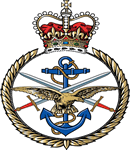Commemorated: | |||
| 1. Memorial: | Poperinghe New Military Cemetery | I. E. 2. | |
| 2. Book: | The (1921) Masonic Roll of Honour 1914-1918 | Pg.115 | |
| 3. Memorial: | The (1940) Scroll - WW1 Roll of Honour | 45A GQS | |
Awards & Titles: | |||
Family :
Son of John S. and Elizabeth Avery; husband of M. G. Avery, of Victoria Park Rd., Kelvin Grove, Brisbane. Born Mackay, Queensland.Education & Career :
Mining Engineer (1910)
Service Life:
Campaigns:
- The First World War 1914-1918, World-wide.
| Unit / Ship / Est.: 1st Coy Australian Tunnelling Corps |
| Action : France & Flanders |
France & Flanders covers all the dates and corresponding locations which are outside the official battle nomenclature dates on the Western Front. Therefore the actions in which these men died could be considered 'normal' trench duty - the daily attrition losses which were an everyday fact of duty on the Western Front.
Detail :
The Australian Tunnellers had arrived in the Hill 60 sector in November 1916 to find that their predecessors, the Canadians, had driven two major mine shafts and that both were prepared with explosive for detonation the following June. The main Australian activity concerned the drainage and ventilation of the shafts and preventing German counter mining measures. This was a particularly unpleasant occupation as apart from the fear of being buried underground, there was a constant risk of underground fighting when mining galleries were detected. Imagine the strain of having to fight in total pitch black, guessing if the man you can hear is friend or foe. The Australian Official History mentions AVERY; On November 29th, however, Lieutenant Carroll, listening from a short defensive gallery (known as B Left?) which was being pushed out from the left of The Caterpillar mine gallery (?B?), reported that he could hear men walking in some neighbouring workings. Captain Avery, in charge of the section of the company then in the mine, immediately stopped work on the ? face ? (the head of the gallery) and himself clearly heard the Germans driving nails and chiselling wood to the left front of the branch gallery, but at least fifty feet away. Reports were sent at once to Second Army headquarters that the Germans were at work between the two great mine galleries. He is also mentioned on several other ocasions when underground work is endangered by German counter mining. Avery was a mining engineer in civilian life in Brisbane. The 1st Company, Australian Tunnelling Corps was working on the mine that was to be blown on Hill 60 at Ypres as part of the Messines offensive in June 1917. On 25th April 1917, the anniversary of ANZAC Day, nine men were killed apparently by a shell landing on their dugout. The Red Cross have a record that A German shell had 'crumpled' the dugout killing three officers and six batmen (officers servants). The Official History in a footnote offers an alternative and more reliable explanation of what happened: About this time, on April 25th, apparently by the premature firing of a super-sensitive detonator, which was being tested by officers In the company?s advanced headquarters, Captain W. .P. Avery and Lieutenants A. E. Tandy (Ballarat, VIC) and G. D. Evans (Randwick, N S W.) were killed, and seven batmen asphyxiated. Corporal J. W. Saxton (Galong, N.S.W.), one of the proto-men, was buried and killed when trying to reach them. Eight of these men are buried in Railway Dugouts Burial Ground which is close to the Hill 60 location. We believe that the ninth man was Captain Wilfred AVERY who is buried in the Poperinghe New Military Cemetery which suggest the possibility that he was wounded but died of wounds. Poperinghe had several medical units in the area and had Wilfred been taken to one of them and later died, it would be logical for him to be buried nearby. At 03.10 on June 7th the great mines were sent up. That at Hill 60 made a crater 60 feet deep and 260 feet wide; that at the Caterpillar a crater go feet deep and 334 feet wide. Hill 60 today has a memorial to the 1st Australian Tunnelling Coy, and the crater torn hill is itself a memorial to the men who were lost there and never found. The Masonic Roll 1921 states William Percival, not Wilfred Percival. Source; THE OFFICIAL HISTORY OF AUSTRALIA IN THE WAR OF 1914-1918. VOLUME IV Appendix I; The Mines at Hill 60
Masonic :
| Type | Lodge Name and No. | Province/District : |
|---|---|---|
| Mother : | Perseverance No. 2820 E.C. | Queensland |
Initiated | Passed | Raised |
26th November 1910 | 25th February 1911 | 30th March 1911 |
Source :
The project globally acknowledges the following as sources of information for research across the whole database:
- The Commonwealth War Graves Commission
- The (UK) National Archives
- Ancestry.co.uk - Genealogy, Family Trees & Family History online
- ugle.org.uk - The records of the United Grand Lodge of England including the Library and Museum of Freemasonry
Additional Source:
- Founder Researchers : Paul Masters & Mike McCarthy
- Researcher : Bruce Littley

